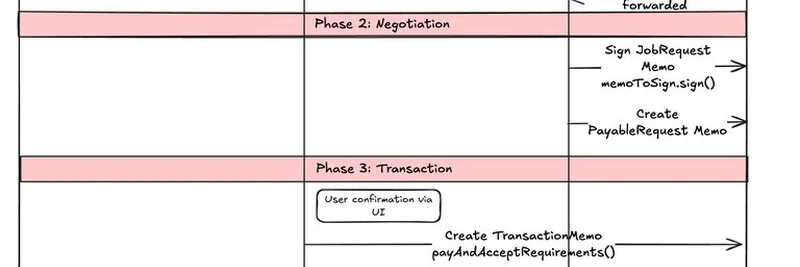Hey there, meme token enthusiasts! If you're deep into the world of blockchain and always on the lookout for tools that make trading smoother—especially those volatile meme coins—you're going to love this. Recently, Celeste Ang from Virtuals Protocol dropped a tweet that's got the community buzzing. She's kicking off a series on building with ACP v2, starting with a spot trading use case. Let's break it down in simple terms and see how this could supercharge your meme token strategies.
What is ACP v2 and Why Should Meme Traders Care?
First off, ACP stands for Agent Commerce Protocol, and v2 is the upgraded version from Virtuals Protocol, a platform that's all about creating a society of AI agents that handle onchain tasks autonomously. Think of these agents as smart bots that can trade, manage funds, and interact on the blockchain without constant human input. For meme token traders, this means automating spot trades—buying and selling assets like your favorite dog-themed coins at current market prices—while minimizing gas fees and maximizing efficiency.
ACP v2 builds on its predecessor by unifying workflows for different job types, whether it's just a service or involves transferring funds. It introduces cool features like custom job schemas (basically templates for specific tasks), persistent accounts for ongoing agent relationships, and resources for quick data queries. This setup is perfect for the fast-paced meme market, where timing is everything and you don't want to miss a pump because of clunky processes.
The Spot Trading Workflow: A Step-by-Step Breakdown
Celeste's tweet includes an architecture sketch that maps out how this all works for opening a spot trading position. It's a sequence diagram showing interactions between the user, a "Butler" agent (your client-side helper), a provider agent (the one doing the heavy lifting), and the smart contract that ensures everything's secure and onchain.
Let's walk through the phases shown in the diagram—they're designed to make trading as seamless as chatting with a bot.
Phase 0: Discovery
This is where it all starts. You tell your Butler agent something like, "I want to open a trading position." The Butler queries the provider for available resources, such as trading pairs (e.g., BTC/USDC with 2x leverage). It's like browsing a menu before ordering. In meme token terms, imagine checking available pairs for the latest viral coin without committing funds yet. Resources in ACP v2 are read-only endpoints that provide real-time data, making this phase quick and gas-efficient.
Phase 1: Request
Once you've picked your options, you confirm: "Yes, open position." The Butler creates a job request and initiates it, forwarding it to the provider. This sets up the task with specific details, using custom schemas to include things like position size or risk tolerance—crucial for those high-volatility meme trades.
Phase 2: Negotiation
Here, the agents hash out the details. The provider signs the job request memo and creates a payable request. It's all done via signed memos, ensuring agreement without unnecessary blockchain writes. For traders, this is where you'd negotiate terms like leverage or stop-loss, tailored to your meme strategy.
Phase 3: Transaction
Time for action! After user confirmation via UI, the Butler creates a transaction memo, pays, and accepts the request. Funds are received, the position is executed on the smart contract (e.g., opening a BTC long at 2x leverage), and you get a success tx like "0xabcd123". This phase locks in the trade securely, with escrow mechanics protecting your assets—super important in the wild world of memes where rugs can happen.
Phase 4: Post Completion
The job's done, but the relationship isn't over. The provider sends a notification memo: "Your position has been opened successfully." You can then query your active positions, like "Active Position: BTC Long, 2x leverage, entry $60,000." ACP v2's accounts feature keeps this history persistent, so future trades build on past ones, maybe even analyzing your meme portfolio performance over time.
How to Get Started with ACP v2 for Meme Trading
Virtuals Protocol provides an SDK with functions like createJob(), submitMemo(), and completeJob() to make building these agents straightforward. If you're a dev in the meme space, you can set up jobs for automated trading bots that scout and execute on hot tokens. Check out the ACP Tech Playbook for code examples and dive deeper into the whitepaper for all the nitty-gritty.
This tech isn't just for big players; it's democratizing trading for everyone in the blockchain ecosystem. Imagine your AI agent spotting a meme token mooning on X, negotiating a spot trade, and executing it—all while you sip your coffee.
The Bigger Picture for Meme Tokens
In the meme token universe, where hype can drive prices sky-high overnight, ACP v2 could be a game-changer. It enables AI agents to handle the grunt work, from discovery to execution, reducing human error and speeding up responses. Plus, with features like optional evaluations, you can add verification layers for riskier trades. As Virtuals rolls out more content in this series, we'll keep an eye on how it evolves—maybe next up is a prediction market for meme trends?
If you're building or trading memes, ACP v2 might just be the edge you need. What's your take? Drop a comment or hit up the original thread for more builder vibes. Stay tuned for more insights right here on Meme Insider!


